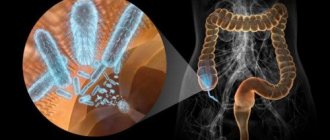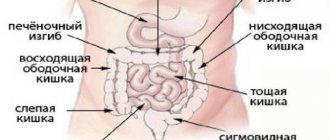Enterobiasis is the most common parasitic disease diagnosed in children. To identify the presence of worms in a child’s body, an accessible, quick and informative method is most often used, which involves a microscopic examination of biomaterial obtained by scraping from the perianal area.
Enterobiasis is the most common parasitic disease diagnosed in children.
In what cases is it carried out?
A child should be scraped for pinworm eggs in the following cases:
- before entering kindergarten, school, or going to camp;
- before starting hospital treatment;
- after contact with a person infected with pinworms;
- if symptoms occur that indicate the possible development of a parasitic disease (itching in the anal area, digestive disorders, fatigue, headaches, restless sleep, etc.).
A child should be scraped for pinworm eggs after contact with a person infected with pinworms.
Also, it is mandatory to conduct a study once a year among children over 12 months.
How to take it at the clinic
Scraping for enterobiasis in children in the clinic is carried out on the direction of a doctor. No special preparation is required for the test, but parents need to remember that the child should not be washed before the test. In addition, you cannot donate biomaterial after defecation, as this may affect the diagnostic result. It is best to come to the clinic early in the morning, when the baby has just woken up.
During the test, the nurse puts on gloves and places the child on the couch with his back to himself or asks him to lean forward slightly.
Then she slightly spreads the patient’s buttocks without touching the anus, and using adhesive tape, a special spatula with an adhesive layer, an applicator with a cotton tip or a swab dipped in an aqueous or glycerin solution, takes the material, touching the device several times to different places in the perianal area .
The resulting material is placed on a glass slide or in a sterile container, which is then sent to the laboratory.
The test procedure itself is completely safe and painless for the child and takes no more than 1 minute.
The test procedure itself takes no more than 1 minute.
What is a scraping for enterobiasis?
Enterobiasis is helminthiasis, that is, a parasitic invasion. White worms - pinworms - appear in humans. They are small, but there are a large number of them in the body of the infected person. The analysis that determines their presence is called an enterobiasis test. In the host, pinworms live in the intestines, more precisely in the segment of the small intestine and the appendix. They lay their eggs in the anal folds, so they take a smear (also called a scraping) from the skin around the anus for analysis.
The peculiarity of the life cycle of pinworms is that they do not lay eggs inside the host. To do this, they definitely need to crawl outside. This makes it easy for worm eggs to land on household items, especially when a child is infested, for example, on bedding and underwear, the floor, toys and a potty. From there, helminths get onto their hands, and since children often put dirty helminths into their mouths and noses, they suffer from enterobiasis much more often than adults.
Interesting. That is why the problem is called “the disease of unwashed hands.”
Complicating matters is the persistence of pinworms. Outside the host's body, the eggs remain viable for up to three weeks. They almost never dry out and keep well and for a long time.
Pinworm worms
How to take scrapings from a child at home
In some situations, it is not possible to take the child to a medical facility to have a scraping taken for enterobiasis. In this situation, it is allowed to independently collect biomaterial at home and then submit it to the laboratory for research. In this case, you should follow the same rules as when preparing for a scraping performed in a clinic.
At home, it is most convenient to collect material for research using a special container and a glass slide with adhesive tape.
Collection using a container for analysis
To collect the material, you need to purchase an oblong sterile container from the pharmacy, the lid of which contains a long stick with a cotton tip.
This container is designed specifically for scraping.
It is necessary to put on disposable gloves, place the child on his side, spread his buttocks with one hand, and with the other take the material, running the applicator over the skin around the anus several times, trying to touch different areas.
Then the instrument must be carefully placed in a container, closed and delivered to a medical facility as quickly as possible. The material can be stored for no more than 2 hours and only at a temperature not higher than +8°C.
The material can be stored for no more than 2 hours and only at a temperature not higher than +8°C.
Slide with adhesive tape
When using a glass slide with adhesive tape, the following algorithm for taking material must be observed:
- Wash your hands with soap and wear gloves.
- Place the child on his side or tilt him forward.
- Remove the tape from the glass, being careful not to touch the surface of the instrument or the sticky layer of the tape.
- Spread the child's buttocks with one hand without touching the anus.
- With your other hand, firmly apply the tape to the anus for a few seconds.
- Remove the strip from the skin and glue it onto a glass slide.
- Send the material to the bacteriological laboratory.
Analysis for pinworms: what are they called, where can you get it and how much does it cost?
The disease of dirty hands is enterobiasis, this is the problem often faced by those who are accustomed to neglecting the rules of personal hygiene. Infection of a person with pinworm parasites is possible at any age; children of preschool and school age often suffer from this, and family members become infected in direct contact with them.
Enterobiasis requires timely detection and treatment. In this article we will tell you everything about the pinworm test: where and how you can take it and what you need for this.
What are pinworm tests called for children and adults?
A roundworm (nematode), entering the human body, begins to actively develop there, then the process of mating of sexually mature individuals occurs and the female pinworm lays eggs on the skin around the anus. All this can happen completely unnoticed by the person himself. The parasites gradually poison his body.
Most often, infestation is detected during routine medical examinations in kindergartens and schools. Adults may learn about the existence of a problem during a medical examination at work, or while treating another disease.
Tests for enterobiasis include blood sampling, examination of feces, and scrapings.
A general blood test in the laboratory may reveal:
- Increased level of eosinophils.
- Reduced hemoglobin level.
The main indicator of invasion is the analysis of a scraping taken from the skin around the anus. The material is collected using a special adhesive tape. Eggs laid by an adult at night or its fragments remain on it.
The analysis result is 50% reliable. To confirm the diagnosis, scrapings must be done for several days in a row. Nematodes do not lay eggs every day, so it is not always possible to detect them the first time.
Important! For the purpose of prevention, an analysis for enterobiasis is carried out once every six months. This will protect the child and adult from parasitic infection.
To make an accurate diagnosis, an additional stool analysis is performed. Pinworm eggs are rarely found in biological material, but this research method should not be neglected.
How to take a blood test for enterobiasis
A general blood test is taken during treatment or a routine medical examination. A person donating blood from a finger for analysis does not always suspect that as a result he may find out about a parasitic infection.
The following indicators indicate the presence of problems:
- in a normal state, the level of eosinophils is 5%; with parasitic infestation it increases. This is due to the fact that the body experiences an increase in toxic load, and there is a need for greater production of specific blood cells in the bone marrow that neutralize them;
- anemia, a decrease in red blood cells in the blood, a drop in hemoglobin concentration is often associated with a large number of parasites developing inside. This may be accompanied by the development of inflammatory processes in the intestines.
The results obtained become a reason for the doctor to prescribe additional examination measures for the child and for the adult, refuting and confirming the preliminary diagnosis. Treatment is selected after this.
What does a stool test determine for enterobiasis?
A smear for enterobiasis is considered the most informative way to detect pinworms in adults and children, as well as pinworm eggs. By examining feces for enterobiasis, it is possible to detect not only infection with helminths, but also the presence of eggs, larvae and fragments of parasites.
A smear for enterobiasis, if there are signs of the disease, should be taken more than twice with an interval of one to two weeks. There are cases when the first and second test for enterobiasis showed a negative, unreliable result, and pinworms can only be detected in the last smear.
If pinworm eggs are not detected, then we can judge that there is no disease. If the smear for enterobiasis shows a positive result, the doctor will select the appropriate therapy and tell you how to treat pinworms.
Test for antibodies to pinworms
Parasitic invasion does not leave its mark on the body. After 20 days, antibodies to pinworms begin to be produced. Based on their indicators, the specialist determines the degree of infection.
An antibody test is additionally prescribed when a general blood test reveals an increased level of leukocytosis for no apparent reason. This technique is also preventive and is used in preschool and school institutions. It helps to identify parasitic infestations in the early stages by identifying the carriers.
During the active development of parasites in the human body, high titers of antibodies are detected in the analysis. Classified:
- the acute phase of IgM invasion, these antibodies are detected already 2 weeks after pinworms enter the body. In the future, the appearance of other antibodies will be detected;
- immunity is resistant to IgG infection.
Another type of immunoglobulin is lgA. Its indicator is summarized when studying the overall picture of the invasion. Antibody levels clearly demonstrate the dynamics of infection and how effective the therapy used is.
The results of these detected immunoglobulins are not enough to make a diagnosis of enterobiasis. Antibodies can be diagnosed in only 40% of patients with gastrointestinal pathology.
Important! Making an accurate diagnosis is possible by undergoing a comprehensive examination and taking several tests.
How to test scrapings and feces for pinworm eggs
How accurate the results of the studies will be depends on the correctness of stool collection and scraping. The scraping is taken at the clinic, but greater reliability can be obtained if it is done at home. For this purpose, a container for collecting biomaterial is purchased at the pharmacy. You should adhere to the basic rules for taking scrapings:
- you cannot empty your intestines before taking biomaterial;
- It is forbidden to wash the perineal area.
If the actions have been carried out, there is a high chance of removing parasite eggs from the skin around the anus. Scraping can be done with a special stick with a cotton ball at the end. You need to pass it around the anus, put it in a sterile container and close it.
The analysis is done at home using gloves. The cotton wool should not touch other objects or surfaces other than human skin.
- The scraping can be taken using adhesive tape and special glass.
- The tape should only be removed from the glass while wearing gloves.
- Apply to the skin around the anus for a couple of seconds.
- Disconnect the tape.
- Attach to glass.
- Use a marker to sign the glass. Send to the laboratory.
Important! Tests taken at home must be delivered to the laboratory within 2 hours.
Collecting stool does not require special recommendations. The biomaterial should be collected in the morning after emptying the bladder.
Collection is done with a special spatula. The feces should be placed in a container, closed, signed, and delivered to the laboratory for testing. The stool can be stored in the container for a maximum of 8 hours, after which the results obtained cannot be considered reliable.
When is scraping prescribed?
With a minor pinworm infection, it is not always possible to identify helminth cysts using stool analysis. In such cases, the most informative diagnostic method is scraping. This procedure is carried out in a clinic if there are signs of enterobiasis.
The following indications exist for scraping:
- registration of a medical record by food-related workers;
- hospitalization, planned treatment;
- the child’s admission to kindergarten;
- symptoms and external manifestations characteristic of pinworm infection;
- certificate for visiting a public swimming pool.
Thus, this technique is often a barrier analysis, which is aimed at preventing the spread of helminths within various social groups and the spread of parasites beyond their boundaries.
How to prepare for a scraping test
If helminths and their eggs are found, the diagnosis of enterobiasis is beyond doubt. To make a diagnosis it is necessary to take a scraping. A swab is taken from the folds of skin around the anus or adhesive tape is placed on the area. However, there may not be a positive result if there was no egg laying the day before. For this reason, such a test should be taken only in the morning, without taking a shower, precisely after that night when the person could not sleep for a long time, slept restlessly and showed symptoms of the disease.
If the test result was negative, the scraping must be repeated several more times within 7-14 days, since even if all recommendations are strictly followed, there is an increased probability of not detecting pinworm eggs in the stool. If the disease is seriously suspected, there are indications for treatment, even if parasites have not been detected.
The main advantage of the method is that it makes it possible to identify pinworms in more than 50% of cases already during the first study. At this very time, a classic coproparasitological study will show worms in only 10-15% of cases.
Sometimes, to exclude the diagnosis of enterobiasis, doctors recommend conducting 7 studies with a mandatory interval of 2 days. If a positive answer is received, all members of the patient’s family must be examined.
Blood pinworm test
Every person in his life, at least once in his life, has encountered the problem of helminthiasis. The most common helminthic infestation is enterobiasis. Symptoms alone are not enough to diagnose. To confirm the disease, you should donate blood for pinworms.
To get tested, the patient must visit a doctor. First, the specialist must draw up a clinical picture after listening to the patient’s complaints. If a patient exhibits the following symptoms, he can be sent for a blood test for enterobiasis:
- The main symptom is itching in the perianal area;
- Insomnia caused by discomfort;
- Decreased appetite;
- Loss of body weight;
- Migraine;
- Nausea and gag reflex;
- Defecation disorder;
- Bloating;
- Cramps in the abdominal area.
A blood test for pinworms is one of the most effective ways to detect the parasite in the body. Blood for pinworms is taken from a finger. After taking the biomaterial, doctors begin the study. If pinworms are present in the body, changes will appear in the circulatory system. When a person has enterobiasis, a blood test will show anemia or eosinophilia.
Blood test for pinworms in children
Pinworms in most cases penetrate the children's body. This is due to the fact that children simply do not adhere to the rules of personal hygiene. You can become infected with worms:
- In the sandbox;
- On the beds;
- On children's playgrounds;
- When communicating with pets.
According to statistics, every baby on earth has been affected by enterobiasis at least once. As soon as the first symptoms appear, the baby should be taken to the clinic to see a pediatrician.
Currently, there are several ways by which pinworms can be detected in the body. The most effective test is donating blood for enterobiasis.
The best way to diagnose is by ELISA. This method can provide more accurate information, but is expensive. The high cost is due to the complexity of the diagnostic procedure. In this case, blood is taken not from a finger, as usual, but from a vein. Diagnosis is carried out in the morning on an empty stomach.
When a laboratory technician identifies pinworms, he determines antibodies to the parasite antigens. It is necessary to study the level of IgA class antisubstance and IgG class. Antibodies to pinworms appear in the human body 2 weeks after the parasite penetrates the child’s body. After another 1-2 weeks, IgG antibodies appear, which remain in the body throughout the entire period of the disease.
It should be remembered that only a doctor familiar with the laboratory and the equipment installed in it can decipher the result. This is due to the fact that indicators may vary and an unknowing doctor will make an incorrect diagnosis.
Before going to the clinic, you need to prepare your body. Otherwise, the result may not be accurate. The patient must follow simple rules:
- The day before the test, it is not recommended to eat fatty foods;
- The last food intake should be at least 8 hours before diagnosis;
- As for water, you can drink it in any quantity. The volume of liquid drunk does not affect the diagnostic results;
- It is strictly recommended not to drink alcohol 4 days before the test;
- It is also better not to use nicotine at least one hour before the procedure.
Some medications may affect test results for enterobiasis. Of course, not all medications can affect changes in blood composition, but it is best not to take medications for several days.
The disease of dirty hands is enterobiasis, this is the problem often faced by those who are accustomed to neglecting the rules of personal hygiene. Infection of a person with pinworm parasites is possible at any age; children of preschool and school age often suffer from this, and family members become infected in direct contact with them.
Other diagnostic methods
Other methods for detecting helminths that cause enterobiasis include stool examination and blood testing for the presence of antibodies to parasitic pathogens. Stool analysis is considered the least informative, since only adult pinworms can be found in feces.
The most reliable diagnosis of the disease is blood. This method makes it possible to almost accurately detect helminthic infestation at any stage of its development due to the fact that the immune system of an infected child produces antibodies to helminths already in the early stages of the disease.










